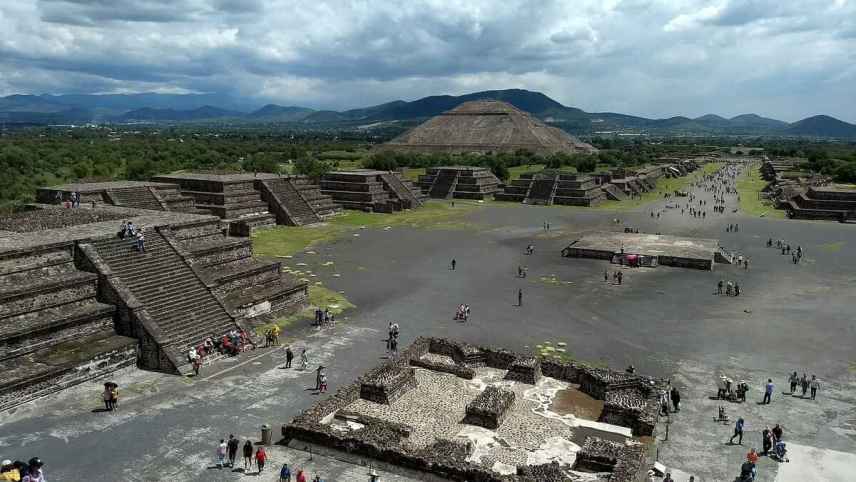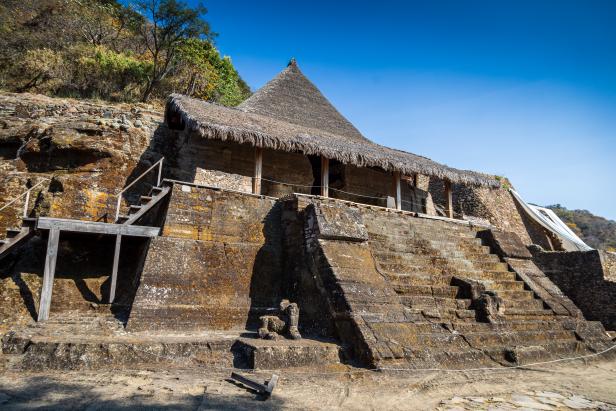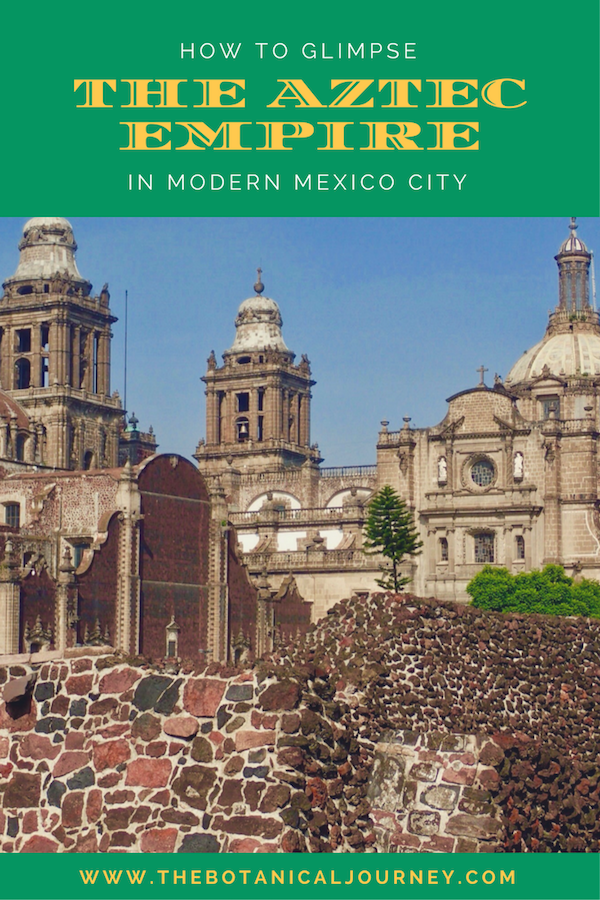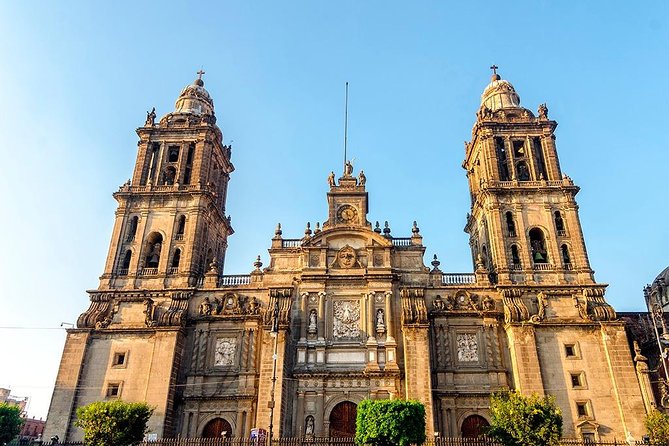So, have you ever wondered about the ancient Aztec civilization and its lasting impact on modern-day Mexico? Well, you’re in for a treat because we’re about to dive into the rich history and fascinating legacy of the Aztecs in this article!
When you think of Mexico, images of stunning beaches, vibrant cities, and delicious cuisine probably come to mind. But did you know that beneath the surface lies a deep and ancient history that dates back thousands of years? The Aztecs, one of the most powerful civilizations in Mesoamerica, once called Mexico home, and their influence can still be seen today.
From the towering ruins of their ancient pyramids to the vibrant traditions and cultural practices that have been passed down through generations, the Aztecs have left an indelible mark on Mexican society. Whether you’re exploring the bustling streets of Mexico City or relaxing on the picturesque beaches of Cancun, you’ll find traces of this ancient civilization wherever you go.
In the upcoming paragraphs, we’ll delve into the various aspects of the ancient Aztec legacy in modern Mexico. We’ll take a closer look at the country’s tourism industry, travel opportunities, hotels, attractions, and of course, the breathtaking beaches that attract millions of visitors each year.
So, get ready to embark on a journey through time and discover how the ancient Aztecs continue to shape the vibrant and diverse landscape of modern Mexico. Stay tuned for more fascinating insights in the rest of this article.

Introduction to the Aztec civilization
The Aztec civilization was one of the most fascinating and influential cultures in ancient Mesoamerica. Flourishing from the 14th to the 16th centuries, the Aztecs built a vast empire that spanned much of present-day central Mexico. Their achievements in various fields, from art and architecture to language and religion, continue to shape Mexican culture to this day. In this article, we will explore the enduring legacy of the Aztecs in modern Mexico, from their ruins and archaeological sites to their influence on Mexican traditions, cuisine, and even sports.
Key characteristics and achievements of the Aztecs
The Aztecs were known for their impressive achievements in architecture, engineering, and agriculture. One of their most remarkable architectural marvels is the city of Teotihuacan, also known as the “City of the Gods.” Located just outside of Mexico City, Teotihuacan was once one of the largest cities in the world and is home to iconic structures such as the Pyramid of the Sun and the Avenue of the Dead. Another famous Aztec site is Chichen Itza, which showcases the fascinating connection between the Aztecs and the Mayans. The Templo Mayor in Mexico City, with its intricate carvings and sculptures, gives us a glimpse into the religious and ceremonial practices of the Aztecs.

Aztec cultural practices and traditions
The Aztecs had a rich and vibrant culture, characterized by their unique traditions and practices. Their art and architecture were highly elaborate, featuring intricate carvings and vibrant murals. Many Mexican designs today are inspired by Aztec patterns and motifs, showcasing the enduring influence of their artistic legacy. Aztec cuisine was diverse and flavorful, with ingredients such as maize, beans, chili peppers, and chocolate being staple elements. Even the Mexican language bears traces of Aztec influence, with many words and phrases originating from the Nahuatl language spoken by the Aztecs.
Aztec Ruins and Archaeological Sites
To truly understand the Aztec legacy, one must visit the ancient ruins and archaeological sites scattered across Mexico. Teotihuacan, often referred to as the “City of the Gods,” is one such site. As you explore the vast complex, you can’t help but marvel at the scale and precision of the buildings. The Pyramid of the Sun, towering above you, offers a breathtaking view of the surrounding valley. Walking along the Avenue of the Dead, you feel as if you are stepping back in time, imagining the bustling streets and vibrant ceremonies that once took place here.
Another must-visit site is Chichen Itza, which showcases the fascinating connection between the Aztecs and the Mayans. The centerpiece of Chichen Itza is the imposing El Castillo, also known as the Temple of Kukulkan. Its stepped architecture and intricate carvings reflect the advanced knowledge of astronomy and mathematics possessed by the Aztecs. As you explore the site, you can’t help but be awed by the sheer brilliance and ingenuity of these ancient civilizations.
In Mexico City, the Templo Mayor stands as a powerful reminder of the Aztec’s religious and ceremonial practices. This ancient temple complex was once the epicenter of the Aztec empire, where elaborate rituals and sacrifices took place. The site’s excavated ruins reveal the intricacies of Aztec architecture and offer insights into their belief system. As you walk among the ruins, you can almost feel the spiritual energy that once permeated this sacred place.

Aztec Influence on Mexican Culture
The legacy of the Aztecs is deeply ingrained in Mexican culture. Their art and architecture continue to inspire contemporary Mexican designs. Aztec-inspired patterns can be seen in everything from textiles and pottery to modern-day murals and sculptures. The vibrant colors and intricate motifs pay homage to the Aztec’s rich artistic heritage.
When it comes to cuisine, the Aztecs made significant contributions to Mexican gastronomy. Maize, beans, chili peppers, and chocolate were all staples in the Aztec diet, and they remain essential ingredients in Mexican cuisine today. Traditional Aztec dishes, such as tamales and mole, continue to be beloved favorites among locals and tourists alike. Each bite is a taste of the Aztec’s culinary legacy.
The influence of the Aztecs is also evident in the Mexican language. Many words and phrases in modern-day Mexican Spanish have their roots in the Nahuatl language spoken by the Aztecs. From everyday words like “chocolate” and “tomato” to more abstract concepts like “coyote” and “avocado,” the Aztec language has left an indelible mark on the Mexican vocabulary.
Aztec Religion and Mythology
The Aztecs had a complex and intricate religious belief system. They worshipped a pantheon of gods and goddesses, each representing different aspects of the natural world. The most important deity was Huitzilopochtli, the god of the sun and war. According to Aztec mythology, the gods demanded human sacrifices to ensure the sun’s continued rise and to maintain the balance of the universe.
Rituals and ceremonies played a significant role in Aztec religious practices. These events often involved music, dance, and elaborate costumes. One of the most iconic Aztec rituals was the “Dance of the Voladores.” In this ritual, four men would climb a tall pole, tie themselves to ropes, and spin down to the ground while playing musical instruments. The dance symbolized the connection between the heavens and the earth and served as a form of worship to the gods.

Aztec Calendar and Astronomy
The Aztecs had a highly sophisticated calendar system that played a crucial role in their religious and agricultural practices. The calendar was based on a combination of solar and ritual cycles, allowing the Aztecs to track the movements of celestial bodies and determine auspicious dates for various activities.
Celestial bodies held great significance in Aztec culture. The sun, moon, and stars were seen as divine entities that influenced the lives of mortals. The Aztec’s understanding of astronomy helped them develop accurate agricultural practices and predict celestial events such as eclipses.
The interpretations of Aztec astronomy are still a subject of fascination and research today. Scholars continue to study the Aztec calendar and celestial observations to gain a deeper understanding of the Aztec’s intricate knowledge of the cosmos.
Aztec Warfare and Conquests
The Aztecs were fierce warriors and skilled strategists. Their military success was a significant factor in the expansion of their empire. The Aztec warrior society, known as the “Eagle Warriors” and the “Jaguar Warriors,” was an elite group trained in combat and revered for their bravery.
Aztec military tactics and strategies were highly organized and effective. They used a combination of body shields, spears, and obsidian-bladed swords to overpower their opponents. The Aztecs also employed psychological warfare, often scaring their enemies with the sight of their intimidating war masks and costumes.
The Aztec Empire grew through a combination of military conquest and political alliances. They forged alliances with neighboring city-states and demanded tribute from those they conquered. The Aztec’s thirst for expansion led them to establish a vast empire that stretched from the Gulf of Mexico to the Pacific Ocean.

Aztec Heritage in Mexican Celebrations
The Aztecs’ cultural legacy is celebrated in various festivals and traditions throughout Mexico. One such celebration is the Day of the Dead, or “Dia de los Muertos.” This vibrant festival, held annually from October 31st to November 2nd, is a unique blend of Aztec traditions and Catholic beliefs. During this time, families gather to honor and remember their departed loved ones. Colorful altars are adorned with marigold flowers, candles, and offerings of favorite foods and drinks, creating a festive atmosphere that pays homage to the Aztec’s reverence for the afterlife.
Another significant celebration is the Fiesta de la Virgen de Guadalupe, which takes place on December 12th. This festival combines Aztec and Christian traditions in honor of the Virgin Mary. The day is marked by processions, music, dance, and elaborate feasts, showcasing the syncretism between Aztec and Catholic beliefs.
The Guelaguetza is yet another celebration that showcases the diversity and richness of indigenous cultures in Mexico. Originating from the state of Oaxaca, this annual event brings together various indigenous communities to celebrate their traditional music, dance, and craftsmanship. The Guelaguetza is a testament to the harmonious coexistence of ancient Aztec customs and the vibrant indigenous cultures that continue to thrive in Mexico today.
Revival of Aztec Traditions and Festivals
In recent years, there has been a revival of Aztec traditions and festivals in Mexico. Modern-day reenactments of Aztec rituals can be witnessed during certain cultural events and ceremonies. These reenactments aim to preserve the ancient customs and keep the Aztec’s cultural heritage alive.
Annual Aztec dance festivals attract participants and spectators from all over the world. These vibrant and energetic performances showcase the intricate footwork and elaborate costumes of traditional Aztec dances. The rhythmic beats of drums and the sound of wind instruments fill the air as dancers pay homage to their ancestors and their rich cultural heritage.
Preserving Aztec arts and crafts is also an essential aspect of keeping the Aztec legacy alive. Many artisans today draw inspiration from Aztec motifs, creating beautiful sculptures, pottery, and textiles that reflect the ancient civilization’s artistic traditions. These crafts serve as a link between the past and the present, ensuring that the Aztec artistic legacy continues to be celebrated and appreciated.
Aztec Influence on Mexican Literature and Art
The influence of the Aztecs can be seen in Mexican literature and art. Many Mexican writers have chosen to explore themes related to Aztec culture in their works. Novels such as “The Labyrinth of Solitude” by Octavio Paz and “The Eagle’s Throne” by Carlos Fuentes delve into the complexities of Mexican identity and the enduring influence of ancient civilizations like the Aztecs.
Contemporary artists have also drawn inspiration from the Aztec culture and mythology. Painters, sculptors, and muralists often incorporate Aztec motifs and symbols in their works, creating visually stunning pieces that pay homage to the ancient civilization’s artistic legacy. These artworks serve as a visual reminder of the Aztec’s lasting impact on Mexican art and culture.
Exploring Aztec Medicine and Healing Practices
The Aztecs had a deep understanding of herbal remedies and healing techniques. Traditional Aztec medicine was based on the belief that physical ailments were often caused by an imbalance of spiritual and cosmic forces. Shamans and healers played a crucial role in Aztec society, using their knowledge of herbs, rituals, and spiritual practices to treat the sick.
Many traditional Aztec remedies are still used today in Mexican folk medicine. Herbs such as aloe vera, marigold, and chamomile are known for their healing properties and are frequently used to treat various ailments. The Aztec approach to medicine also emphasized the importance of spiritual healing, recognizing the connection between the mind, body, and spirit.
Aztec Legacy in Mexican Sports and Games
The Aztecs were passionate about sports and games. One of their most famous games was Pok-a-Tok, an ancient Mesoamerican ball game played with a solid rubber ball. The objective of the game was to keep the ball in play using only the hips and elbows. Pok-a-Tok was not only a form of entertainment but also a religious ritual that held great significance in Aztec culture.
Today, modern adaptations of Aztec sports can be enjoyed in Mexican communities and schools. Tournaments and exhibitions featuring Pok-a-Tok are held, allowing participants and spectators to experience the excitement and athleticism of this ancient game. The Aztec influence can also be seen in traditional Mexican games such as ulama, a ball game similar to Pok-a-Tok, and pelea de gallos, or cockfighting, a popular pastime in certain regions of Mexico.
Preserving Aztec History and Artifacts
Preserving Aztec history and artifacts is a crucial endeavor to ensure that future generations can continue to learn from and appreciate the Aztec legacy. Museums dedicated to Aztec culture and history play a significant role in this preservation effort. These museums display artifacts such as pottery, sculptures, and textiles, giving visitors a chance to admire the artistry and craftsmanship of the ancient Aztecs.
Conservation efforts are also essential in protecting Aztec ruins and artifacts. These efforts involve careful restoration and maintenance to prevent further deterioration of these precious historical sites. Archaeologists play a vital role in preserving Aztec heritage by conducting research, excavations, and documentation. Their work helps unravel the mysteries of the Aztec civilization and sheds light on their incredible achievements.
The Modern Perception of the Aztec Legacy
The Aztec civilization continues to captivate the imagination of people worldwide. However, there are controversies and debates surrounding the Aztec legacy that stem from the darker aspects of their civilization. The Aztecs practiced human sacrifice as part of their religious rituals, which has sparked ethical and moral discussions among historians and scholars.
Misconceptions and stereotypes about the Aztecs also persist. The notion of them being a violent and barbaric civilization often overshadows their remarkable achievements in art, astronomy, and architecture. It is important to recognize the complexity and multidimensionality of the Aztec civilization and to separate fact from fiction when discussing their legacy.
Despite the controversies and stereotypes, the Aztec legacy continues to have a profound impact on Mexican identity. The Aztecs’ contributions to art, architecture, language, cuisine, and spirituality are deeply ingrained in Mexican culture and have become an integral part of the Mexican national identity.
Conclusion
Exploring the ancient Aztec legacy in modern Mexico is an enchanting journey that takes you back in time to a civilization known for its achievements, cultural practices, and traditions. Whether you visit the awe-inspiring ruins and archaeological sites, savor the flavors of traditional Aztec cuisine, witness the vibrancy of Aztec-inspired art and literature, or partake in ancient reenactments, you are sure to gain a deeper appreciation for the enduring influence of the Aztecs.
The rich cultural heritage inherited from the Aztecs serves as a constant source of inspiration for further exploration and discovery. By recognizing and appreciating the Aztec legacy, we can gain a better understanding of Mexico’s past and present, and foster a deeper respect for the diverse cultures that shape its identity. So, pack your bags, embark on a journey through time, and immerse yourself in the ancient Aztec legacy that continues to thrive in modern Mexico.